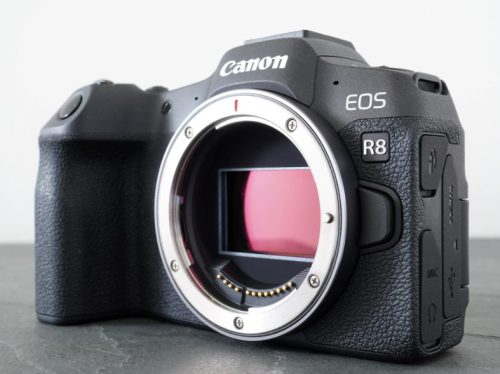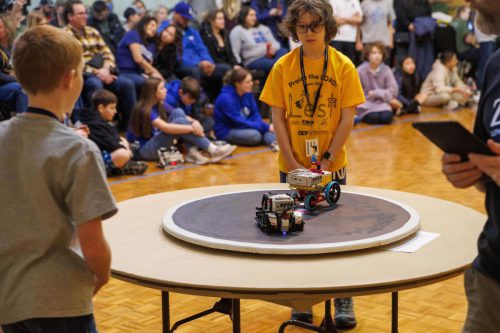For our first Christmas as a married couple, Tyla and I decided we’d do “family gifts” instead of specific gifts for each other. This year it was tickets to see the Piano Guys when they come to Seattle, but that first year we decided to get a nice camera. I had some SLR experience from high school when I bought a Minolta 500si but that didn’t prove useful too long as the world moved from film to digital. I was interested in getting a modern dSLR so we dipped our toes in the water with a Canon T2i and the 18-55mm kit lens. I later added a 55-250mm f/4-5.6, a 50mm f/1.8, and a Tamron 28-75mm f/2.5. None of it was fancy or expensive but it helped me learn a lot more about where I was pushing the limits of the gear and where I just need to learn more.
The main roadblock with that T2i was the “crop sensor.” Lower end dSLR cameras have smaller sensors than the higher end full frame sensors. The full frame sensors have 2.6 large surface area than the crop (APS-C) sensors. The extra size is particularly beneficial in low light situations, so I used Elijah’s desire to play basketball again this year as a good excuse to upgrade.
I ended up getting a Canon R8 which is on the low end for Canon’s full frame camera bodies, but it also has the advantage of being the more modern mirrorless style camera. As the name implies, mirrorless cameras do away with the mirror which means the cameras can be lighter, smaller, and faster.
I bought just the body for the camera since my old lenses would be compatible and would be enough to get me started. With the change to mirrorless tech and the change in form factor, Canon introduced a new camera mount called RF lenses. These lenses are smaller, lighter, and have all the latest tech. But thankfully you can still use all the older EF lenses with an adapter. To complicate things a bit, both the EF and RF lenses have “-S” variants which were specifically made for crop sensor cameras. They technically work on full frame cameras but they’re typically cheaper build quality and will also produce vignetting on the bigger sensors. My 18-55mm and 55-250mm were EF-S lenses but my 50mm and 28-75mm were EF lenses since I had bought those hoping I would upgrade to a nicer camera body in the future.
So that’s a lot of text before I talk about actually using the camera. Honestly, it’s frustrating. I had tens of thousands of pictures under my belt with the T2i and I barely had to think about it. Now there’s a lot more futzing around for the setting I want, missing shots because it’s focusing on the wrong place, etc. I believe all of that is just a learning curve and I’ll end up ahead of where I was.
To help speed up some of that learning, I took the camera to Elijah’s multi-school competition last weekend. He was competing in a Lego building competition and Lego robotics. I took a lot of pictures and ended up with a few passable ones but nothing stellar. Mostly it was interesting to see how the camera behaved indoors with unpredictable kids and lots of stuff moving around as I tried to hold focus on the right spots. The camera does do some pretty amazing eye detection and focus tracking. It seems natural to post some images here but as I said, none of them really show off the capabilities of the camera. Here’s one which is nice except that Elijah’s back is to the camera.
That 28-75mm lens is my favorite and is generally the only one that was on my old camera unless I had some very specific reason to get out the ultra-fast 50mm lens for very shallow depth of field. That 28-75mm lens had enough reach to handle most situations I was in, but that zoom feels inadequate on the new R8 body. This is because the crop sensor camera bodies have an unavoidable 1.6x zoom compared to a full frame sensor. So on the T2i, that 75mm zoom behaved like a 120mm zoom. Now on the R8, I lose that which is great on the wider end of the zoom but not on the narrower. More on that in a future post.
I had been using a copy of Lightroom from back in the days when you could just buy the software and be done. That copy of Lightroom doesn’t work with the more modern RAW photo formats. Now Lightroom is a subscription model and I’m not willing to pay that much per month for something that I don’t even use every month. I hunted around through a lot of alternative software including darktable and RawTherapee. I’m sure those tools can do what I need but I’m not interested in devoting months of my life to learning their painful UIs. Corel PaintShop Pro was included for free with my camera and I figured I would just move to that but unfortunately, they don’t support photos from the R8 yet. If they do, I might switch to that. For now I’m using my existing copy of Adobe Photoshop Elements. The Organizer app lets me flip through all my shots, tag some specific ones, and then I can edit them in their native RAW format. I’m mainly adjusting white balance and making a few other small tweaks so it’s good enough. It’s a major downgrade from Lightroom but I wasn’t using most of what Lightroom offered anyway.
I’ll have mercy on you and stop rambling, but this has been a fun process to work through. I know I’m the weird dad at Elijah’s events who is walking around taking pictures of everything, but I love having the pictures when I’m done, and let’s be honest, I’d be the weird dad at the event even if I did have a camera in front of my face.


